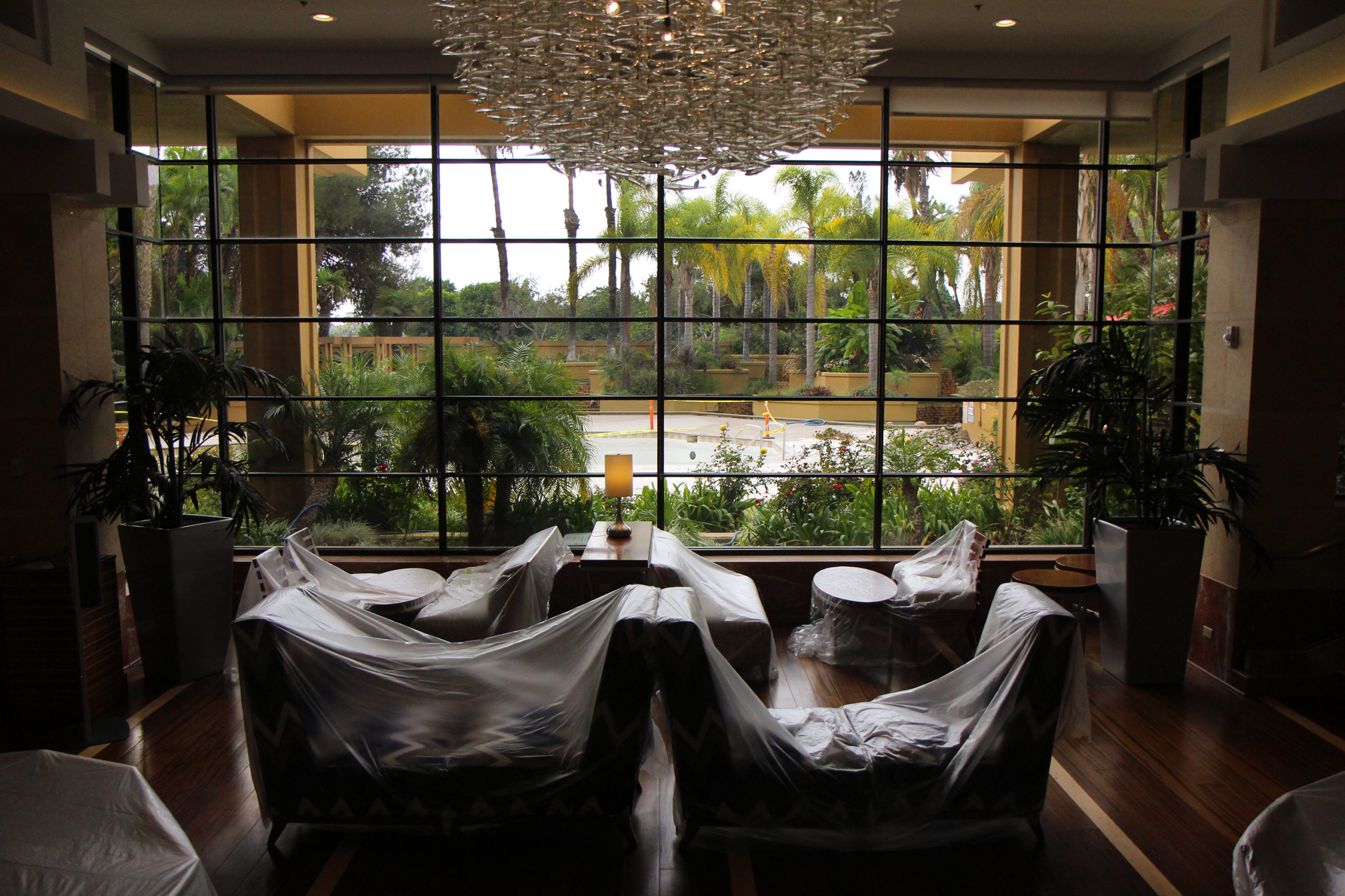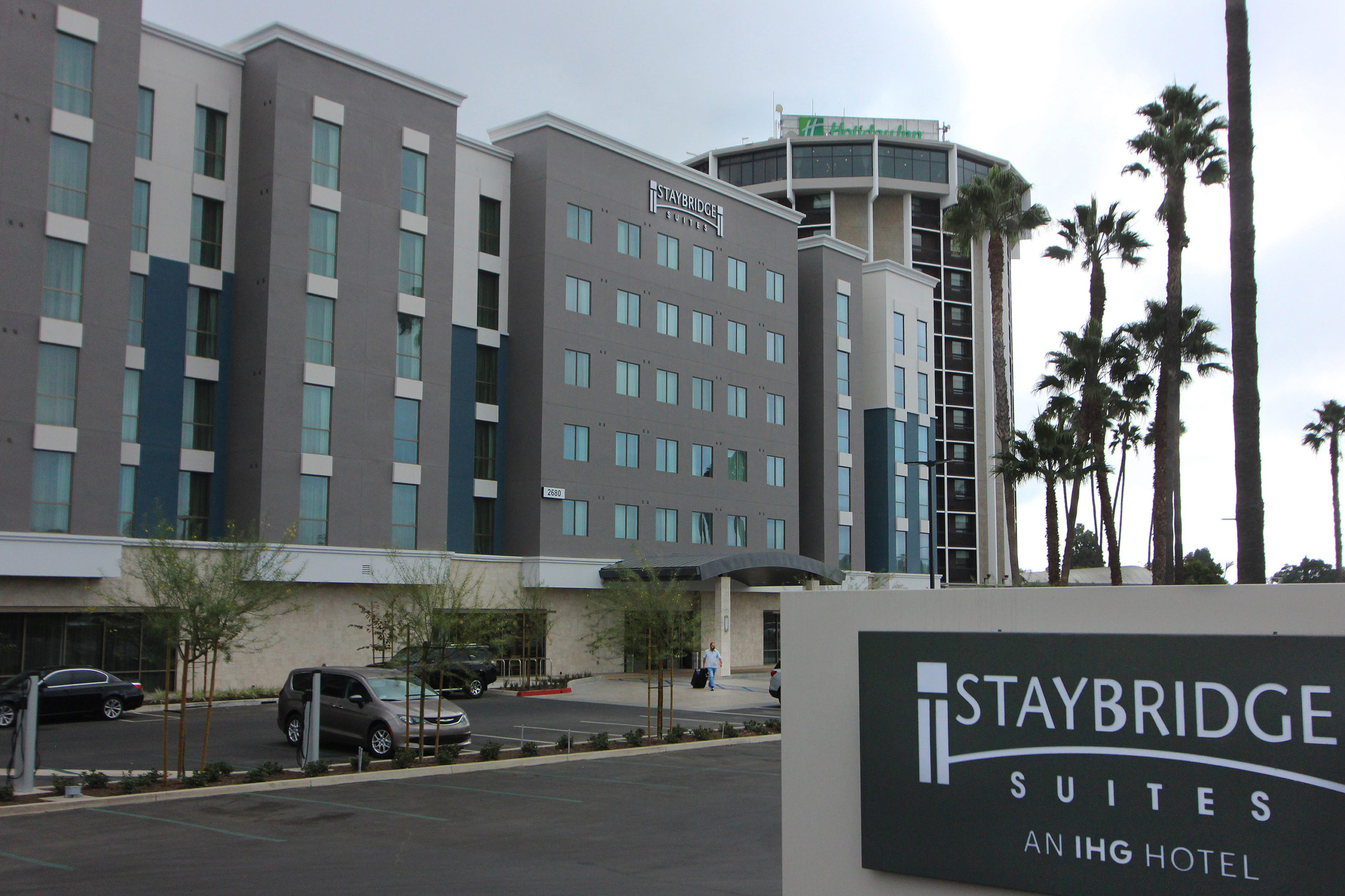
The COVID-19 pandemic has been, in no uncertain terms, devastating to the hotel industry, with local facilities anticipating millions of dollars in losses this year due to nearly nonexistent tourism and business travel.
“This year started out a blockbuster—we were beating last year by 3-5% in January and February,” said Imran Ahmed, general manager of Long Beach Marriott. “March was on track to beat last March but then everything went down and we haven’t been able to recover.”
The Marriott facility usually grosses between $18 million and $20 million annually, Ahmed said. However, due to excessively low occupancy rates—at one point plummeting as low as 9%—Ahmed only expects the hotel to bring in around $5 million.
Adjacent to the airport, JetBlue’s departure from Long Beach in October was another blow to the Marriott’s bottom line. The airline contract for pilots and crew to stay at the hotel during layovers was Marriott’s largest. Additionally, Ahmed said he discounted rates up to 40% to attract more business.
To break even, the hotel needs a consistent monthly occupancy around 50-55%, Ahmed said. As it is, occupancy has been consistently around the 37% mark since summer.
While no Marriott employees have been let go, Ahmed said layoffs are likely soon to come. For months, staff—including Ahmed—had reduced schedules, working three to four days per week, which allowed the hotel to save on payroll expenses.

The one silverlining: the Marriott used this downtime to complete a massive $18 million renovation of the hotel, including rooms, meeting space, restaurants, banquet halls and public areas.
“We didn’t get any guest complaints filed during the renovation,” Ahmed said with a chuckle.
The Marriott was not the only hotel to undergo renovations during the pandemic. The 138-room Hyatt Centric The Pike Long Beach in Downtown began renovations in December that were completed in July, four months after the pandemic began. The hotel has since reopened.
The city’s second Hyatt property, the Regency in Downtown, ceased operations in mid-March and has yet to reopen. With 522 rooms, the Regency is the city’s largest hotel, usually filled with convention goers. However, the pandemic has prevented all in-person conventions and has kept the hotel shuttered.
“[We] have a small team working to upkeep the maintenance and security of the building during this period,” Regency and Centric General Manager Sid Ramani said in an email. “We anticipate resuming Hyatt Regency in early 2021.”
Ramani said Hyatt’s top priority is caring for its “hotel family,” which led to the development of the Hyatt Care Fund. The fund was developed through the Hyatt Hotels Foundation and provides relief to those financially impacted by the pandemic.
For all the hotels are open, operations aren’t expected to hit pre-COVID levels until summer 2021 at the earliest. Mooyon Kim, general manager of Holiday Inn Long Beach Airport and the new Staybridge Suites, said he fully expects a soft first half of the year, which could extend into September if current trends continue.
“It really depends on how people gain confidence to travel and overcome the fear of coronavirus,” said Kim, adding that a vaccine would likely boost business.

Despite the challenges, Kim said no layoffs have occurred and none are planned. Some employees were furloughed early in the pandemic but almost all have returned to work, he said. Those who did not return either found other jobs or chose not to.
The Holiday Inn was selected to take part in the California Healthcare Workers Program, which was created to keep the state’s healthcare workers safe and healthy and reduce the spread of COVID-19 by providing them with hotel rooms. Kim said the program has been key in keeping the hotel afloat in lieu of nonexistent government and business travel, but noted that health worker room nights began decreasing around July.
The Staybridge hotel, adjacent to the Holiday Inn tower, opened in August just in time to host Food Network crews in town for the filming of an unidentified show. Because of the TV crew support, the Staybridge opened with about 30% occupancy, while the Holiday Inn dipped down to the low 20% range.
Staybridge occupancy has worked its way up to the high 40% range and the Holiday Inn closed out October around 70%. While the increases are a good sign, Kim noted that October is usually a strong month with occupancy around 90%.
“The projections are so fluid right now. Having been in the industry for 35 years, I have never seen anything like this ever,” Ahmed said. “Nobody can forecast anything—there are no trends, there is no pace.”
